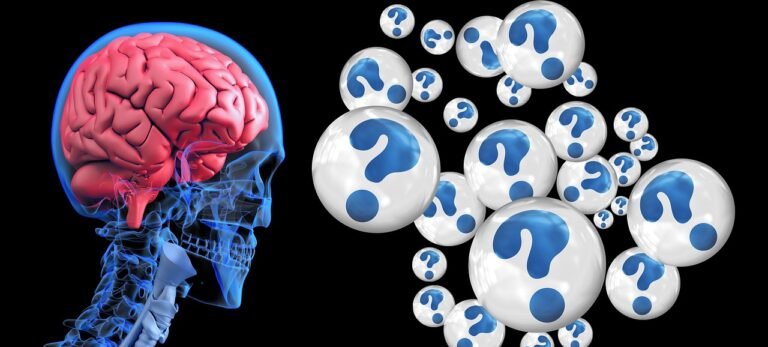Unraveling the Mysteries of One-Shot and Few-Shot Learning in Prompt Engineering
Unraveling the Mysteries of One-Shot and Few-Shot Learning in Prompt Engineering

Image Source: Unsplash
As a writer and AI enthusiast, I find the field of prompt engineering fascinating. One-shot and few-shot learning are two of the most intriguing and promising applications of prompt engineering. In this article, I’ll explore the ins and outs of one-shot and few-shot learning, their role in prompt engineering, benefits, limitations, and strategies to make the most of them.Introduction to prompt engineering
Prompt engineering is a relatively new field that combines natural language processing (NLP) and machine learning (ML) to create intelligent systems that can understand and respond to human language. Prompt engineering involves designing and fine-tuning prompts or input queries to generate specific outputs or responses.
Prompt engineering is different from traditional ML approaches that involve training models on large datasets to recognize patterns and make predictions. Prompt engineering focuses on designing prompts that can generalize to new and unseen data with minimal training. This approach is particularly useful for one-shot and few-shot learning, where the goal is to learn from a small number of examples.
Understanding one-shot learning
One-shot learning is a type of supervised learning that involves training a model to recognize new objects or concepts from only one or a few examples. One-shot learning is challenging because it requires the model to generalize from a limited set of training data.
To illustrate one-shot learning, consider the task of recognizing a new handwritten digit. Suppose we have only one example of the digit “3” and want to train a model to recognize it. One-shot learning involves designing a prompt or input query that can capture the essential features of the digit “3” and generate accurate predictions for new examples.
One-shot learning has many applications, such as image classification, speech recognition, and natural language processing. One-shot learning is particularly useful in scenarios where collecting large datasets is impractical, expensive, or time-consuming.
Exploring few-shot learning
Few-shot learning is a generalization of one-shot learning that involves training a model to recognize new objects or concepts from a small number of examples, typically between 5 and 10. Few-shot learning requires the model to learn from few examples and generalize to new and unseen data.
To illustrate few-shot learning, consider the task of recognizing a new animal species. Suppose we have only five examples of a new species and want to train a model to recognize it. Few-shot learning involves designing a prompt or input query that captures the essential features of the species and generates accurate predictions for new examples.
Few-shot learning has many applications, such as natural language processing, computer vision, and speech recognition. Few-shot learning is particularly useful in scenarios where collecting large datasets is impractical, expensive, or time-consuming.
The role of prompt engineering in one-shot and few-shot learning
Prompt engineering plays a crucial role in one-shot and few-shot learning. The goal of prompt engineering is to design prompts or input queries that can capture the essential features of the objects or concepts we want to recognize and generate accurate predictions for new examples.
Prompt engineering involves designing prompts that are specific to the task at hand, contain relevant information, and minimize noise and irrelevant information. Prompt engineering also involves fine-tuning pre-trained models to improve performance on specific tasks.
Prompt engineering is essential for one-shot and few-shot learning because it allows us to generalize from a small number of examples and learn from new and unseen data. Prompt engineering also helps us overcome the limitations of traditional ML approaches that require large datasets and extensive training.
Benefits and applications of one-shot and few-shot learning
One-shot and few-shot learning have many benefits and applications. Some of the benefits of one-shot and few-shot learning are:
- They require less training data than traditional ML approaches, making them more practical and cost-effective.
- They can generalize to new and unseen data with minimal training, making them more versatile and adaptive.
- They can learn from few examples of new objects or concepts, making them more useful in scenarios where collecting large datasets is impractical, expensive, or time-consuming.
Some of the applications of one-shot and few-shot learning are:
- Image classification: One-shot and few-shot learning can be used to recognize new objects or concepts in images from only one or a few examples.
- Speech recognition: One-shot and few-shot learning can be used to recognize new words or phrases from only one or a few examples.
- Natural language processing: One-shot and few-shot learning can be used to generate responses or outputs from only one or a few input prompts.
Challenges and limitations of one-shot and few-shot learning
One-shot and few-shot learning also have some challenges and limitations. Some of the challenges and limitations of one-shot and few-shot learning are:
- They require careful prompt engineering to ensure accurate and reliable predictions.
- They can be prone to overfitting or underfitting if the training examples are not representative or diverse enough.
- They may not perform as well as traditional ML approaches on complex or high-dimensional data.
To overcome these challenges and limitations, we need to develop effective prompt engineering strategies and fine-tune models to specific tasks and domains.
Strategies for effective prompt engineering in one-shot and few-shot learning
Effective prompt engineering is crucial for one-shot and few-shot learning. Here are some strategies for effective prompt engineering:
- Design prompts that are specific to the task at hand and contain relevant information.
- Minimize noise and irrelevant information in the prompts.
- Fine-tune pre-trained models to improve performance on specific tasks.
- Use domain-specific knowledge and data to improve prompt design and model performance.
By following these strategies, we can improve the accuracy, reliability, and generalization of one-shot and few-shot learning models.
Case studies and examples of successful one-shot and few-shot learning applications
One-shot and few-shot learning have many successful applications in various domains. Here are some case studies and examples of successful one-shot and few-shot learning applications:
- Google’s Quick, Draw! game uses one-shot learning to recognize drawings of various objects from only one example.
- Facebook’s ALFA system uses few-shot learning to recognize new concepts in images from only a few examples.
- OpenAI’s GPT-3 language model uses one-shot and few-shot learning to generate text from only one or a few input prompts.
These examples demonstrate the versatility, adaptability, and potential of one-shot and few-shot learning in various domains.
Tools and resources for prompt engineering in one-shot and few-shot learning
There are many tools and resources available for prompt engineering in one-shot and few-shot learning. Here are some of the most popular ones:
- Hugging Face’s Transformers library provides pre-trained models and tools for fine-tuning models on specific tasks.
- OpenAI’s GPT-3 API provides a powerful language model that can generate text from only one or a few input prompts.
- Google’s AutoML tools provide automated machine learning solutions that can learn from few examples.
These tools and resources can help us design effective prompts, fine-tune models, and improve the performance of one-shot and few-shot learning systems.
Conclusion
One-shot and few-shot learning are two of the most promising and exciting applications of prompt engineering. They offer many benefits and applications, from image classification to natural language processing. However, they also pose some challenges and limitations that require effective prompt engineering strategies and fine-tuning of models. By developing effective prompt engineering strategies and leveraging the right tools and resources, we can unlock the full potential of one-shot and few-shot learning and create intelligent systems that can learn from limited examples and generalize to new and unseen data.
CTA: Get started with prompt engineering today and explore the possibilities of one-shot and few-shot learning!







